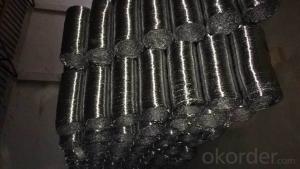Hanging Flexible Duct: A Guide to Proper Installation
Ducts are the unsung heroes of our homes and workplaces, silently working to ensure that we have the right temperature and air quality. But when it comes to installing them, especially flexible ducts, it can be a bit of a puzzle. Let’s dive into the world of hanging flexible ducts with a less formal, more personal touch, and make this process as easy as pie.
The Importance of Proper Installation
Before we get our hands dirty, it’s crucial to understand why proper installation matters. Flexible ducts, also known as flex ducts, are designed for easy installation in hard-to-reach places. However, if not installed correctly, they can lead to energy inefficiency, poor indoor air quality, and even health issues. So, let’s make sure we do this right!
Know Your Ducts
To start, we need to know our ducts inside and out. Flexible ducts are made from flexible materials like plastic or metal foil, and they come in various sizes and shapes. They are lightweight, easy to maneuver, and can be a lifesaver when working in tight spaces. But remember, they are not a one-size-fits-all solution. Choose the right size and material for your specific needs.
Planning the Route
Now, let’s plan the route for our ducts. This is like mapping out a treasure hunt, but instead of treasure, we’re finding the best path for our air to flow. Consider the layout of your space, potential obstacles, and the most efficient way to get the air where it needs to go. A little bit of planning can save you a lot of headaches later on.
Cutting the Ducts to Size
Cutting the ducts to the right size is like tailoring a suit – it needs to fit perfectly. Use a sharp utility knife and a straight edge to make clean, precise cuts. Remember, it’s better to cut a little longer than too short, as you can always trim it down later. But a duct that’s too short will leave you in a tough spot.
Hanging the Ducts with Care
Hanging the ducts is where the real magic happens. You’ll need some support from duct hangers or straps. These are like the duct’s best friends, holding them up and keeping them in place. Make sure to space them evenly along the duct run to maintain proper support and airflow. Don’t forget to secure them tightly – you don’t want any sagging or misalignment.
Sealing and Insulating the Ducts
No one likes a leaky duct, right? Sealing and insulating the ducts is essential to prevent air leaks and energy loss. Use mastic sealant or duct tape (not the regular kind, but specifically made for ducts) to seal any joints or connections. And for extra warmth and energy efficiency, consider insulating your ducts, especially if they run through unheated spaces.
The Final Touches
With the ducts hung and sealed, it’s time for the final touches. This is where we make sure everything is shipshape and Bristol fashion. Double-check all connections, ensure there are no leaks, and that the airflow is smooth and even. Then, sit back and enjoy the fruits of your labor as you bask in the perfectly regulated air of your space.
Troubleshooting Common Issues
Let’s face it, even with the best planning and execution, we might run into some hiccups. Here are a few common issues and how to tackle them:
– Leaky Ducts: If you notice air leaks, it’s time to break out the sealant and apply it to the leaky spots.
– Poor Airflow: This could be due to a blockage or a kink in the duct. Inspect the duct run and clear any obstructions.
– Noise Issues: Sometimes, the ducts can be a bit chatty. If you hear rattling or humming, check for loose connections or vibrations against nearby objects.
Maintenance and Longevity
Taking care of your flexible ducts will ensure they serve you well for years to come. Regularly inspect them for wear and tear, and replace them if necessary. A well-maintained duct system is not only more efficient but also a healthier environment for you and your loved ones.
The Joy of DIY
There’s something incredibly satisfying about tackling a project like this on your own. It’s not just about saving money; it’s about the pride in knowing you’ve improved your living space with your own two hands. So, roll up your sleeves, and let’s get to work!
In Conclusion
Hanging flexible ducts might seem like a daunting task, but with the right knowledge and a bit of elbow grease, it can be a breeze. Remember, every step counts, from planning to the final touches. So, go ahead, take that leap, and become the duct hanging master you were always meant to be!

